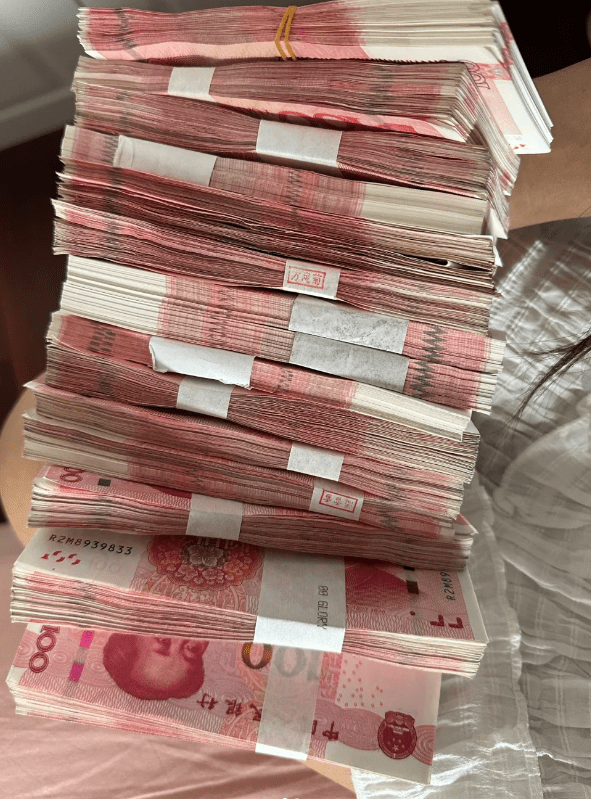
Making money in the cryptocurrency circle is just the first step; safely cashing out is the real endpoint. Especially when the amount reaches millions, any oversight in the cash-out process may lead to “winning the market but losing the principal”. Based on years of practical experience, sharing a verified risk avoidance system:
One, platform selection: lock in the “time buffer” mechanism
Core principle: prioritize leading platforms with T+1 mode (such as Binance, OKX compliant area)
The T+1 mechanism requires that funds can only be withdrawn 24 hours after they arrive; holders of dirty money (relying on rapid transfer) will actively avoid such platforms, reducing the probability of contact with “problem funds” from the source;
Stay away from “instant arrival + anonymous transactions” niche platforms; these platforms are often hotspots for dirty money circulation, with extremely high regulatory risks.
Two, merchant screening: use “old qualifications” to filter risks
Focus on two indicators: registration duration + transaction volume
Prioritize selecting merchants registered for over 3 years with cumulative transaction volumes exceeding 1 billion U: long-term surviving merchants have established mature risk control systems (such as verifying the source of funds, rotating receiving accounts), with an 80% lower probability of freezing compared to new merchants;
Avoid “high premium + zero reviews” abnormal merchants: if a merchant's quote is more than 2% higher than the market average and all comments are positive, it may be a short-term brushing account with hidden dirty money risks.
Three, cash-out timing: weekday + daytime operation, leave enough “reaction window”
Best time: Monday to Friday 9:00-17:00 (both banks + platform customer service are online);
Risk time: late night, early morning, holidays (when there are frozen cards or abnormal funds, customer service response may be delayed, potentially missing the best handling time).
Four, price and security: 1% price difference for 100% peace of mind
Do not get tangled in “highest quotes” when cashing out: even if the merchant's quote is 1% lower than the market price, as long as it meets the “old merchant + large transaction volume” standard, choose decisively — for funds of hundreds of thousands, a 1% price difference may cost several thousand, but the potential risk of card freezing could lead to total loss;
Beware of “tiered pricing” traps: some merchants claim “rebate for single transaction over 1 million”, but they may actually mix in dirty money by splitting transactions, be sure to request “independent settlement for each single transaction”.
Five, full transaction process: use “real-name closed loop” to block loopholes
Order Message Template:
“Request real-name personal bank card payment, name XXX (consistent with the order), confirm receipt within 10 minutes after the payment, non-real-name payments will be refunded via the original route.”
(Clearly inform the merchant: you are rigorously verifying the source of funds to reduce the possibility of the other party using a corporate account or someone else's account to make a payment)Receipt Verification Iron Rules:
Immediately verify after receipt:Whether the payer's name is consistent with the merchant's real-name registration;
Whether the remarks contain sensitive words such as “virtual currency” or “U” (if so, contact the merchant immediately to change the receiving card);
Once发现 “non-real-name payment” or “corporate payment”, regardless of the other party's reason (such as “family payment”), refund via the original route within 24 hours, never wait longer.
Six, receiving card management: make the card “live”, avoiding bank risk control
Card selection criteria:
Use “daily active cards” (linked to WeChat / Alipay, with monthly consumption records); reject “sleeping cards” or “zero balance cards” (sudden large funds entering will trigger 90% of banks' temporary freezes);
Prepare 3-5 cards from different banks (major banks like ICBC and CCB have stricter risk control, can be paired with local banks to diversify risk).
Daily maintenance actions:
Keep 500-1000 yuan balance on each card, use the card for consumption 1-2 times a week (buying milk tea or recharging phone credits is fine);
3 days before cashing out, use the target card to make 1-2 small transfers (such as to family members), allowing the bank to determine it as “normal account usage.”
Seven, absolute taboo: prohibit “small amount testing”, direct large amount operation
Blood and tears lessons from veteran players in the crypto circle: Do not first transfer 100 yuan to “test if the card can be used” — this behavior of “small amount testing + large amount follow-up” is a key marked “suspicious mode” by the bank's anti-money laundering system, increasing the probability of card freezing by 300%;
Correct approach: If in doubt about the security of the card, directly switch to an active card for operation without testing.
Eight, tiered solutions: the “splitting art” of funds in millions
Fund volume operation strategy: 100,000 - 500,000 single card single transaction, choose weekdays during the day, do not transfer within 3 days after receiving the payment, only for daily consumption; 500,000 - 2,000,000 split into 3-5 cards, each card single transaction not exceeding 500,000, operate every 2-3 days, transfer to the main card within 48 hours after receiving the payment; for amounts over 2,000,000, activate “transition card + main card” two-level system:
1. Use 5 transition cards, each receiving 200,000 - 300,000 once, with a 3-day interval;
2. After the funds stay in the transition card for 5 days, transfer to 1 main card (the main card does not directly receive cryptocurrency funds);
3. Main card funds are withdrawn monthly, not exceeding 500,000 per month
Final reminder: There is no “100% safety” in the cryptocurrency circle, but following this process can reduce the risk to below 1%. Remember: real big players don't earn a lot, but are able to safely bring the earned money home.
Daily focus: SSV ZRO MLN